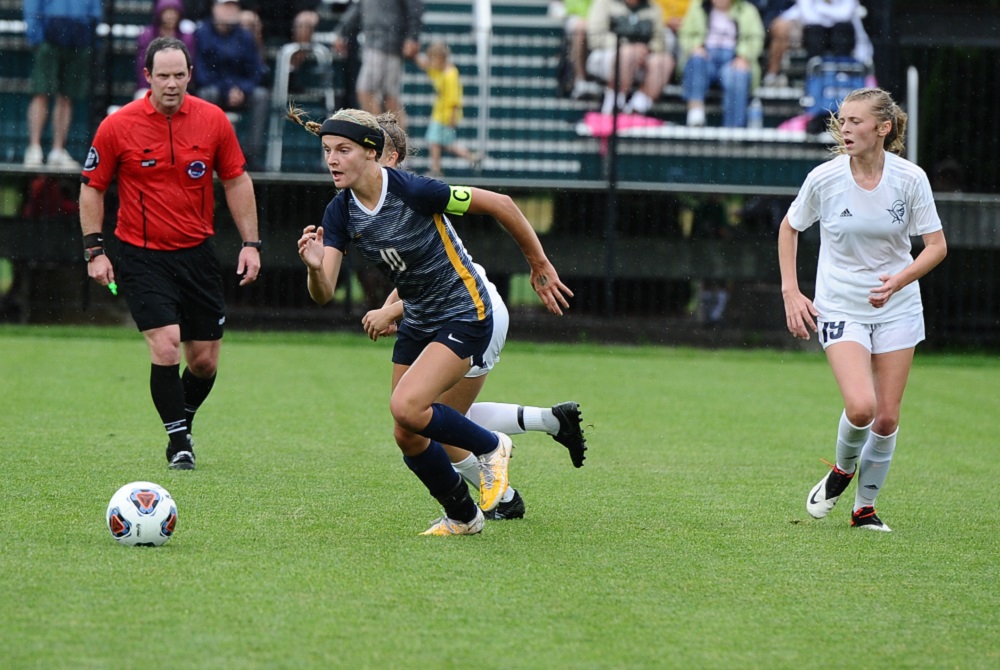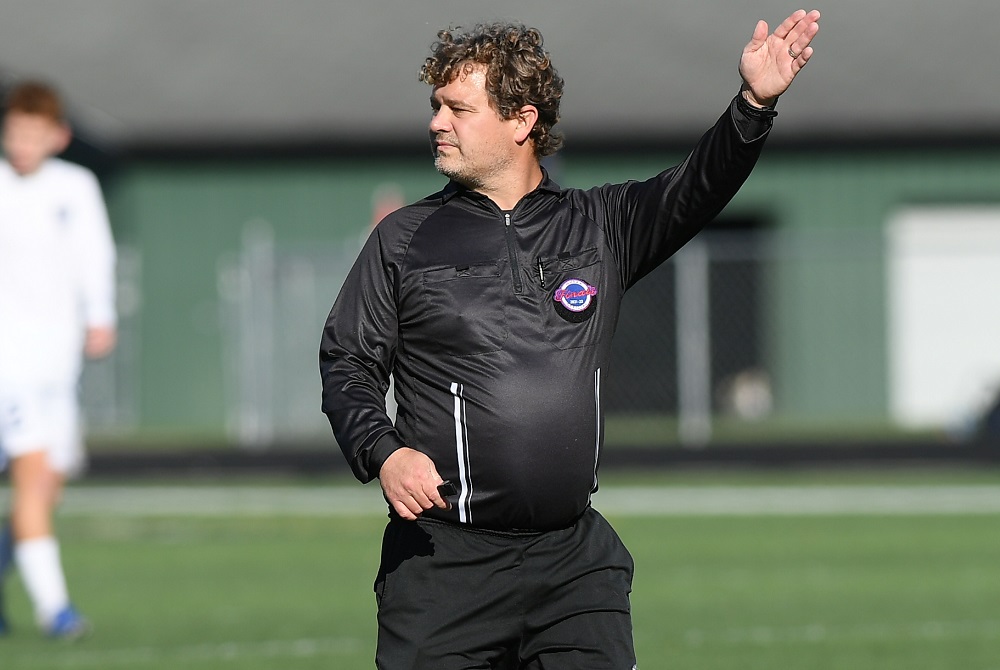
Be the Referee: Soccer Referee Jersey Colors
By
Sam Davis
MHSAA Director of Officials
November 1, 2022
Be The Referee is a series of short messages designed to help educate people on the rules of different sports, to help them better understand the art of officiating, and to recruit officials.
Below is this week's segment – Soccer Referee Jersey Colors - Listen
A soccer match is about to start between two teams – one wearing road white uniforms and one wearing its home blues. It’s pretty easy to spot the referee in the middle of the field wearing a bright yellow referee jersey.
But what if the home team is nicknamed the Yellow Jackets and they are also wearing bright yellow jerseys?
Soccer officials come prepared. They have a number of different colored jerseys, so they can wear something that contrasts with both teams. While yellow is the default color, they can very easily change into a distinctive uniform if needed – as red, blue, green and black are also acceptable colors. They may even choose to wear a color different from what the goalkeepers are wearing. The last thing a referee wants is to be mistaken for a player on the field.
Previous Editions:
Oct. 18: Cross Country Tie-Breaker - Listen
Oct. 11: Soccer Shootouts - Listen
Oct. 11: Safety in End Zone - Listen
Oct. 4: Football Overtime Penalty - Listen
Sept. 27: Kickoff Goal - Listen
Sept. 20: Soccer Timing - Listen
Sept. 13: Volleyball Replays - Listen
Sept. 6: Switching Sides - Listen
Aug. 30: Play Clock - Listen
Aug. 23: Intentional Grounding Change - Listen

Be the Referee: Soccer Timing
By
Sam Davis
MHSAA Director of Officials
September 20, 2022
Be The Referee is a series of short messages designed to help educate people on the rules of different sports, to help them better understand the art of officiating, and to recruit officials.
Below is this week's segment – Soccer Timing - Listen
One of the biggest complaints people make about professional soccer is never knowing how much time is really left in the game. The clock counts up from zero, and the referee can add time at their discretion.
But that’s not the case in high school soccer.
To start with, halves are 40 minutes, not 45. The clock starts at 40 and counts down. And when players are injured and the ball is not in play, the clock will stop and then restart when action is ready to continue.
In the last five minutes of the game, the clock stops for substitutions by the leading team, so a coach can’t stall by sending in a new player. When the clock hits zero and the buzzer sounds … the game is over. There’s no guessing how much added time there is – the end of the game is the end of the game.
Previous Editions:
Sept. 13: Volleyball Replays - Listen
Sept. 6: Switching Sides - Listen
Aug. 30: Play Clock - Listen
Aug. 23: Intentional Grounding Change - Listen

